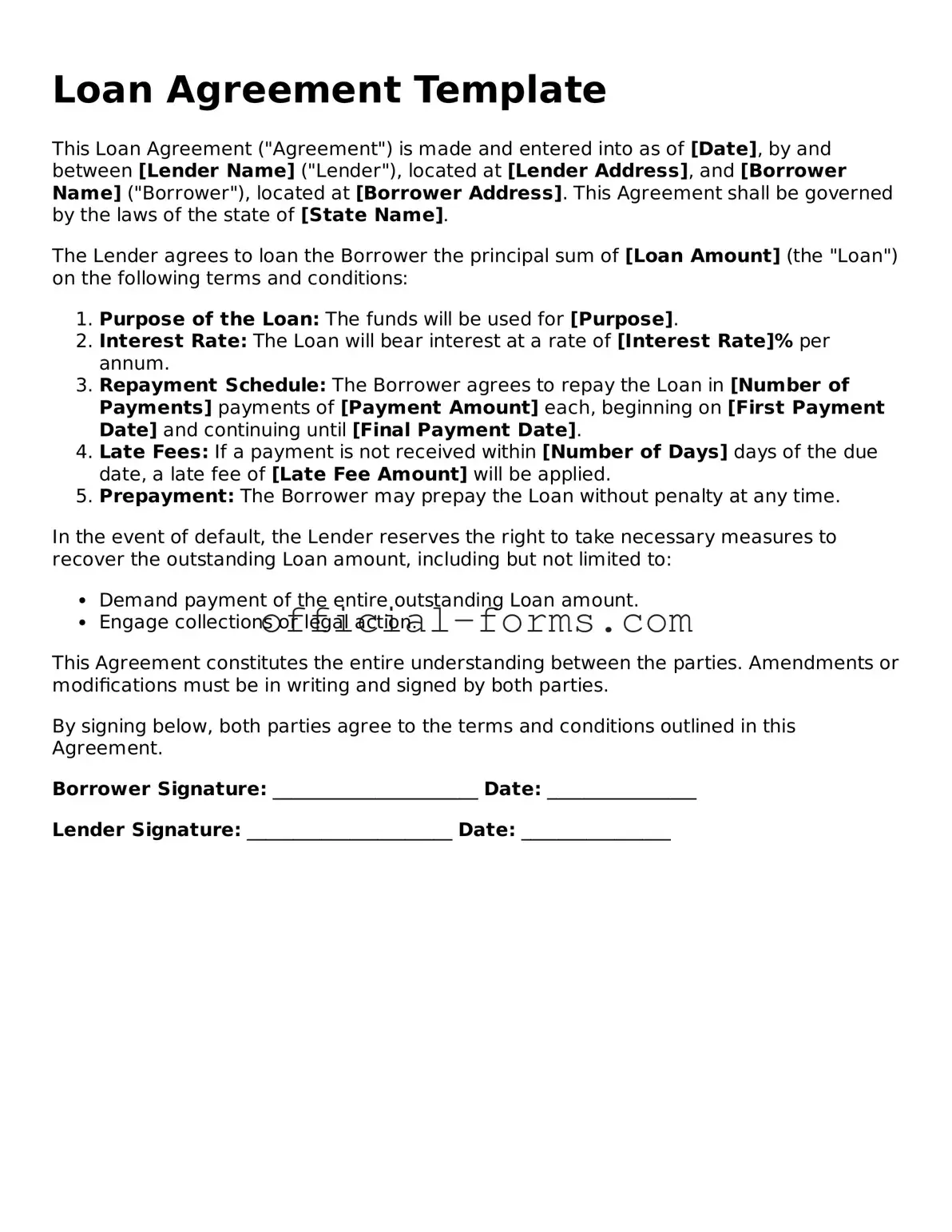Filling out a Loan Agreement form can be a straightforward process, but mistakes can lead to complications. One common error is providing inaccurate personal information. Borrowers may overlook details such as their full legal name, address, or Social Security number. This can result in delays or even denial of the loan.
Another frequent mistake is failing to read the terms and conditions carefully. Many individuals rush through the form without understanding the implications of the agreement. This can lead to unexpected fees or obligations that were not anticipated at the time of signing.
People often forget to include necessary documentation. Lenders typically require proof of income, employment verification, and identification. Omitting these documents can slow down the approval process or cause the application to be rejected.
In addition, some borrowers may not disclose all outstanding debts. Lenders assess a borrower's ability to repay based on their total financial picture. Failing to report existing loans or credit card debt can lead to a miscalculation of the borrower's financial capacity.
Another mistake involves misunderstanding interest rates. Borrowers may confuse fixed and variable rates or fail to recognize how interest will accumulate over time. This misunderstanding can result in financial strain if payments are higher than expected.
Moreover, people sometimes overlook the importance of a co-signer. If the borrower has a limited credit history or poor credit score, a co-signer can strengthen the application. Neglecting to consider this option may reduce the chances of loan approval.
Some individuals also fail to ask questions about the loan process. It is essential to clarify any uncertainties regarding repayment terms, penalties for late payments, or the consequences of defaulting. Not seeking this information can lead to misunderstandings later on.
Lastly, a significant error is not keeping copies of the completed Loan Agreement form. Having a record of the signed document is crucial for future reference. Without it, borrowers may find themselves in disputes or unable to track their obligations.
